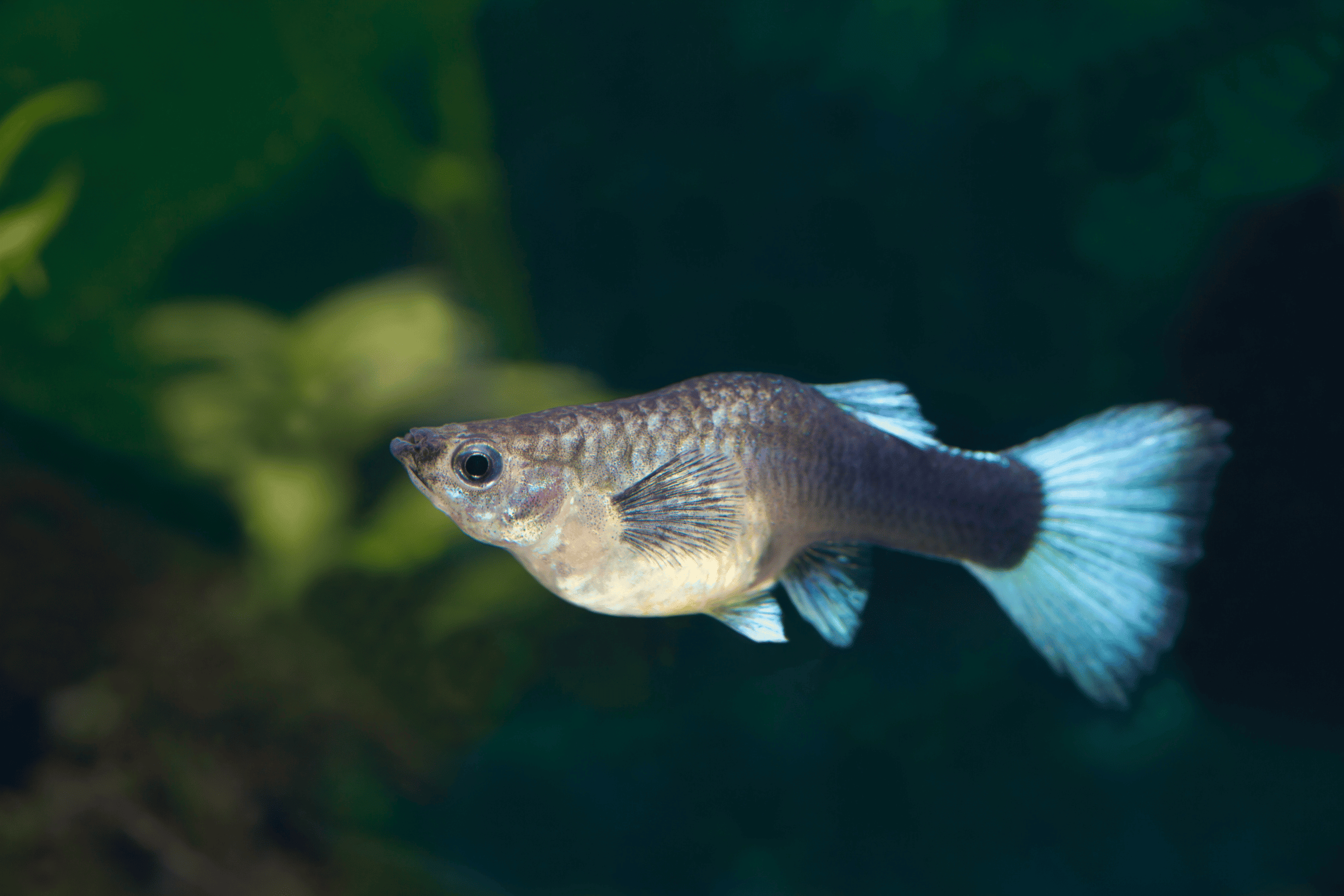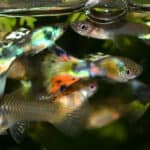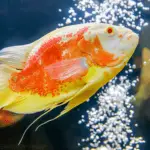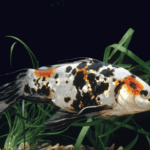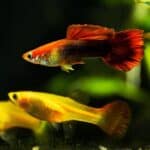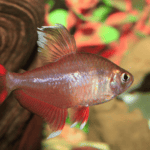Guppies are popular freshwater fish known for their vibrant colors and ease of care, making them a favorite among aquarium hobbyists. One fascinating aspect of guppies is their ability to reproduce rapidly, with pregnant guppies often capturing the interest of fish enthusiasts. Understanding the stages of a pregnant guppy, proper care, and signs of labor is essential for promoting the well-being of both the mother and her offspring.
The gestation period for a guppy ranges from 21 to 31 days, with proper care being crucial to prevent excessive stress on the pregnant fish. Stressed female guppies may suffer miscarriages or give birth prematurely, which can be detrimental to the health of the mother and her fry. Factors such as genetics, food availability, and the age of the mother play a role in the outcome of her pregnancy and the number of babies she gives birth to. Typically, younger guppies giving birth for the first time have fewer babies, which may also be smaller and weaker.
During the course of the guppy’s pregnancy, there are three main stages: fertilization, gestation, and parturition. Fertilization takes place when the male guppy releases sperm into the female’s body, fertilizing the eggs. Gestation then lasts for about 21 to 30 days, with the embryos developing inside the female’s body. In order to ensure a successful pregnancy and healthy fry, it is essential for hobbyists to learn about the intricacies of pregnant guppy care and the different stages of their development.
Pregnant Guppy Overview
Biology
Guppy fish (Poecilia reticulata) are small, freshwater fish known for their beautiful colors and patterns, making them a popular choice for aquarium hobbyists. Guppies are live-bearing fish, meaning they give birth to live young rather than laying eggs. They are prolific breeders, and pregnant guppies are a common sight in home aquariums.
Female guppies can become pregnant multiple times during their lifespan, and their pregnancy typically lasts for about 21-30 days. One of the first signs of a pregnant guppy is the development of a gravid spot near the base of the mother’s anal fin. This spot appears dark yellow at first, and will continue to darken as the pregnancy progresses. As the embryos grow, the female guppy’s belly increases in size, and it may even take on a somewhat boxy or angular shape just before birth.
During their pregnancy, guppies may exhibit changes in their behavior, such as reduced appetite or increased aggression towards other fish. It is essential to provide pregnant guppies with proper care and attention to ensure a healthy pregnancy and reduce the risk of complications. This includes maintaining good water quality, providing a well-balanced diet, and offering hiding spaces or breeding boxes for the mother to give birth in a safe environment.
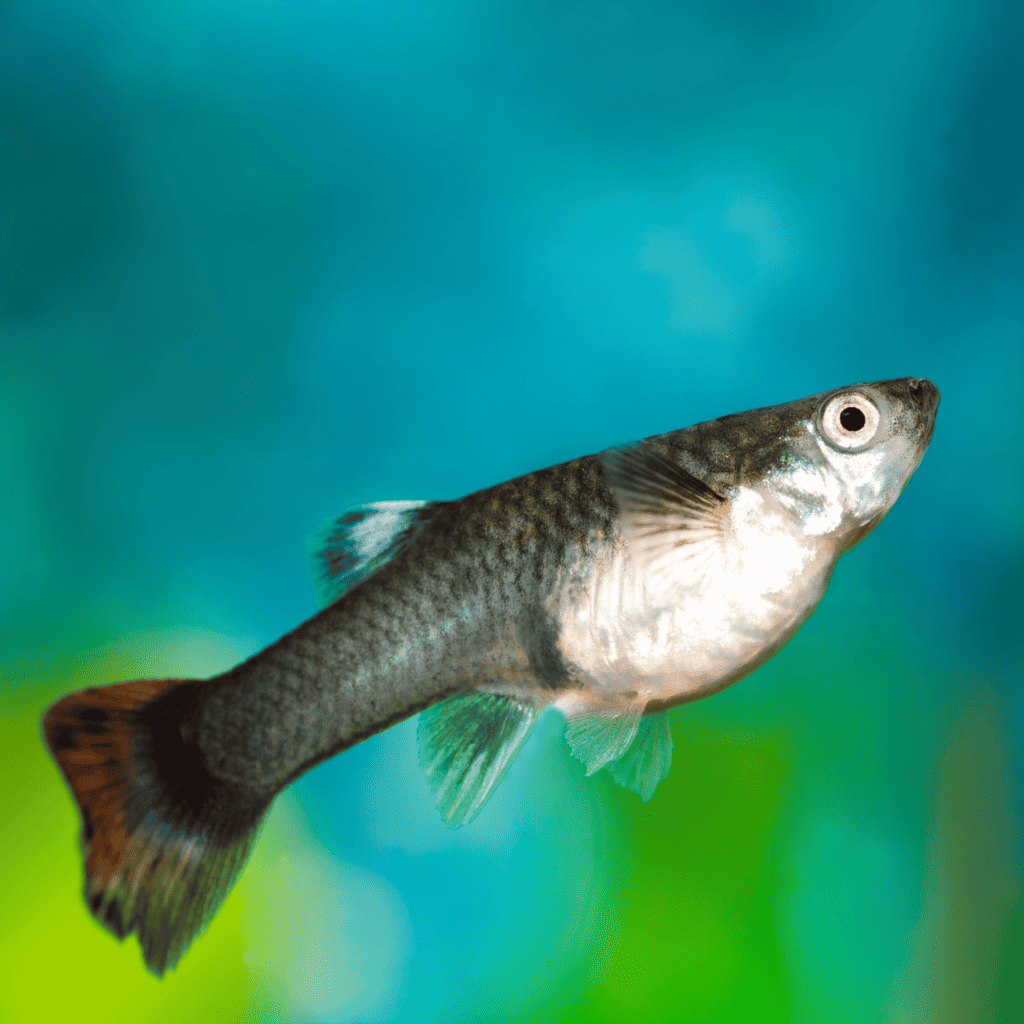
Classification
Guppies, also known as rainbow fish, belong to the family Poeciliidae, which includes many other types of live-bearing fish commonly found in aquariums. The scientific name for guppies is Poecilia reticulata, and they come in various strains and color combinations. Male and female guppies can be distinguished by differences in their size, coloration, and fins. Male guppies are generally smaller, have brighter colors, and possess a larger and more elongated fin, known as the gonopodium, which is used for inseminating the female.
In summary, pregnant guppies are common occurrences in aquariums due to their live-bearing nature and prolific breeding habits. Recognizing the signs of pregnancy, such as the gravid spot and changes in behavior, can help aquarium hobbyists ensure adequate care for their precious fish.
Reproduction and Mating
Male Guppy Behavior
Male guppies display unique behaviors when attempting to court a female guppy. They will often perform a dance, which includes rapidly vibrating their body and flaring their fins, to attract their prospective mate. Male guppies also have a specialized fin called a gonopodium, used for transferring sperm to the female during mating.
Female Guppy Behavior
When a female guppy is receptive to mating, she might respond to the male’s advances by slowing down, allowing the male to approach. Female guppies store sperm for multiple uses, meaning she can give birth to several batches of fry even after just one mating event.
Insemination and Fertilization
Guppies reproduce through internal fertilization, with the male transferring sperm to the female using the gonopodium. The sperm then fertilizes the eggs inside the female’s body, initiating gestation. Gestation in guppy fish typically lasts for about 21-31 days, although it can range up to 35 days in some cases, depending on factors like water temperature and the availability of food.
Breeding Behavior
To encourage breeding in guppies, you can create a conducive environment in the fish tank:
- Maintain water temperature between 74-82°F (23-28°C)
- Provide live or frozen foods in their diet
- Use dense vegetation or breeding mops for fry hiding spots
As a female guppy progresses through pregnancy, you’ll notice several behavioral changes, such as:
- A darkening gravid spot near the anal fin
- A swollen abdomen
- Seeking solitude and hiding places as labor approaches
When it’s time for the pregnant female to give birth, she will release live fry into the tank. At this point, it’s essential to separate the mother and other adult guppies from the fry, as they may eat them. Provide the fry with appropriate live or frozen foods for proper development and growth.
Signs of Pregnancy
Gravid Spot
One of the first signs to look for in a pregnant guppy is the appearance of a dark spot near the fish’s anus, known as the gravid spot. As the pregnancy progresses, this spot will become darker and more noticeable.
Stages of Pregnancy
The pregnancy stages in guppies are marked by a few specific physical changes. As the embryos grow, the female guppy’s belly will gradually become more prominent and swollen. This will typically occur over the course of a month, during which the fish’s overall appearance will become boxier.
Behavioral Changes
Many pregnant female guppies start to exhibit behavioral changes, too. They tend to get more aggressive when they’re pregnant, especially towards male guppies. This feisty behavior can be directed at other fish as well, but it is most commonly observed in interactions with males.
Body Contractions
As the delivery time approaches, you may notice body contractions in your pregnant guppy. These contractions may cause the fish to appear as if it is trembling or shuddering. This is a sign that the guppy is preparing to push her fry out of her body and that delivery is imminent.
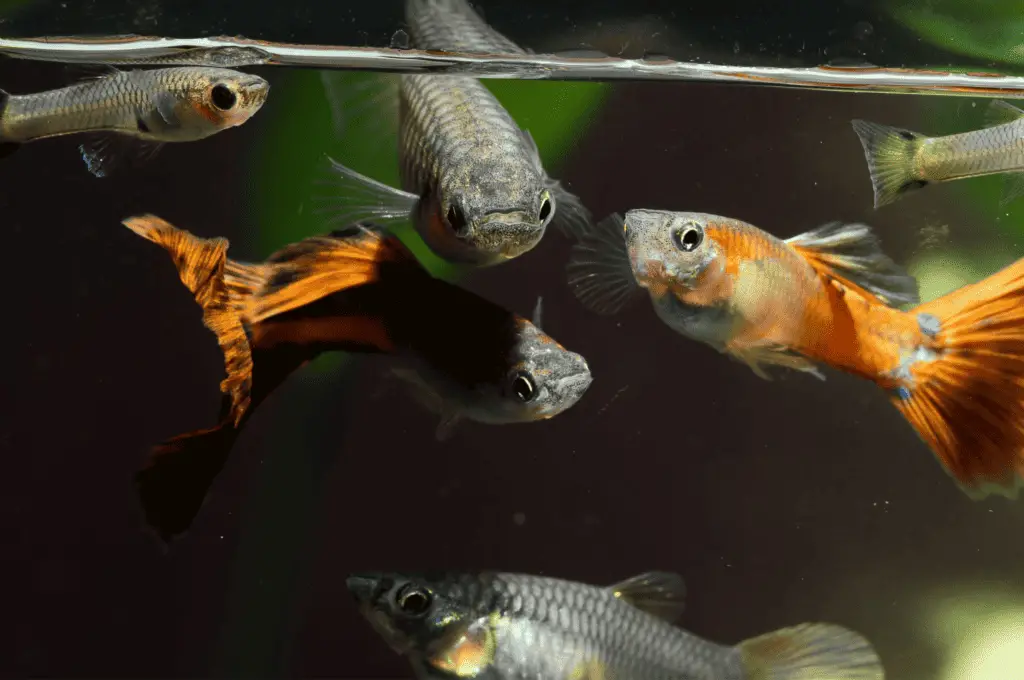
Gestation and Delivery
Gestation Period
Guppies have a relatively short gestation period, lasting on average between 21 and 31 days. In some rare cases, it may last as long as 35 days. Factors such as water temperature and food availability can influence the exact duration of the gestation period.
Stages of Guppy Pregnancy
There are three main stages during guppy pregnancy:
- Fertilization: This occurs when the male guppy releases sperm into the female’s body, fertilizing her eggs.
- Gestation: Lasting for about 21-30 days, this is the period when the embryos develop inside the female’s body.
- Parturition: During this stage, the female guppy gives birth to her fry.
Signs of Delivery
As the end of the gestation period approaches, there are a few signs you can look for that indicate a pregnant guppy is about to give birth:
- Body contractions: A guppy preparing for delivery may experience contractions, causing her to appear as if she is trembling or shuddering.
- Full belly: Near delivery, a pregnant guppy’s belly will become noticeably rounder and fuller.
- Gravid spot: The area near the guppy’s anus, called the gravid spot, may darken as her due date approaches.
Actual Birth
Once labor begins, the female guppy will release her fry one at a time, typically birthing between 20 and 200 fry per spawn. It is important to provide a safe environment for the fry, as guppies can be known to eat their young. Consider separating the pregnant guppy into a separate tank with hiding spots for the fry, such as live plants or breeding boxes, to ensure their safety.
